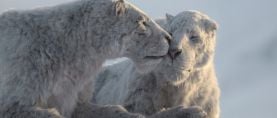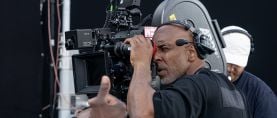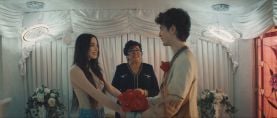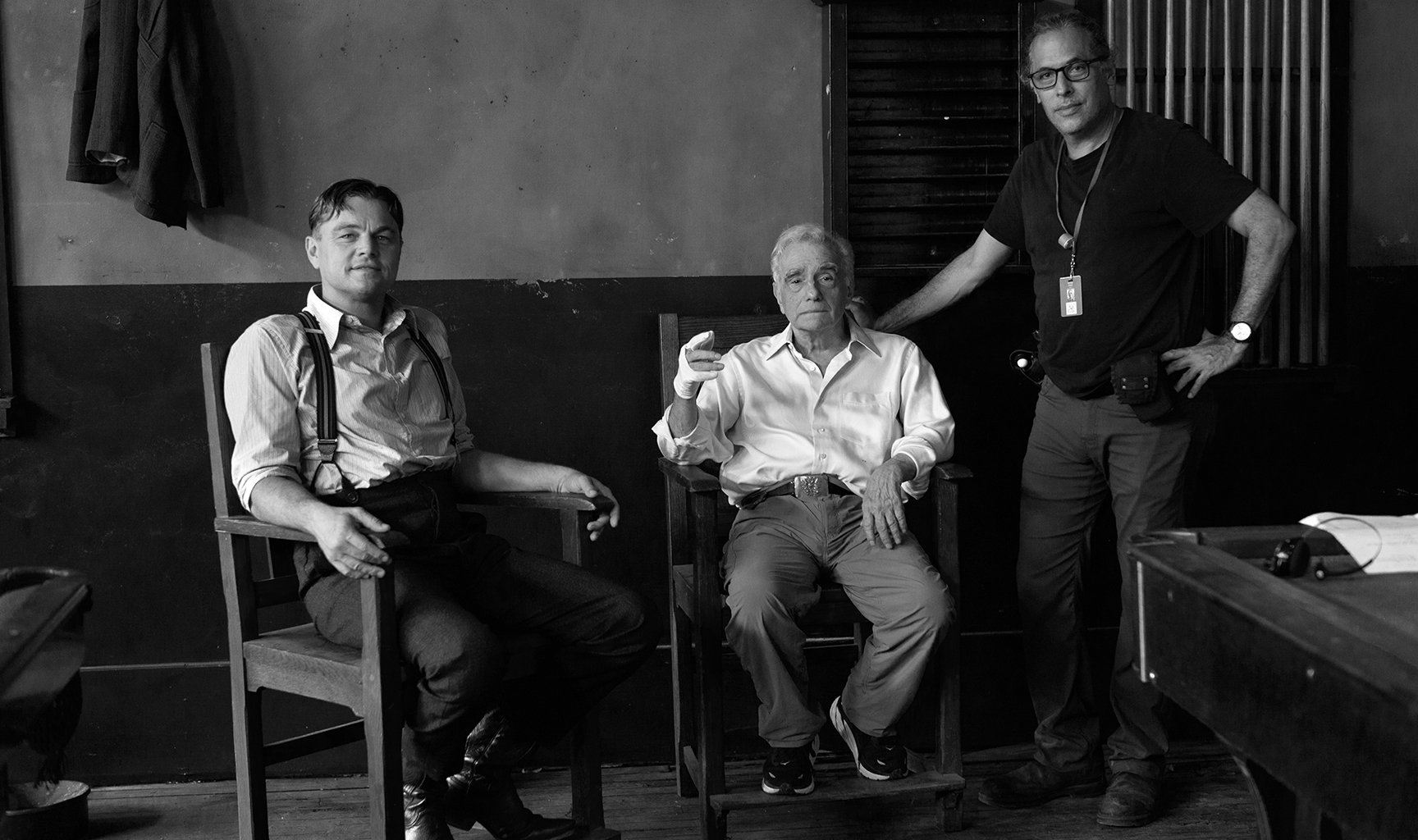
Martin Scorsese — “Every Picture Should Be a Challenge”
The director comments on his latest film — Killers of the Flower Moon — and his creative partnership with cinematographer Rodrigo Prieto, ASC, AMC.
American Cinematographer: What particularly struck you about Rodrigo’s talents and philosophy when you first invited him to work with you? And were the arduous conditions the two of you experienced while shooting Silence a definitive test of your creative partnership?
Martin Scorsese: I was very impressed by Rodrigo’s work for Alejandro Iñárrítu, Ang Lee [and] Pedro Almodóvar. The philosophy I’ve learned as we’ve talked and worked together for so many years now: Every picture is a test. But yes, the conditions for Silence were arduous. I’ll never forget the day we were in the middle of a typhoon, and here was a knock on my trailer door. I figured they were coming to tell me that we were wrapping for the day. I opened the door and a mysterious figure popped in, clad in rain gear. He took off his hat and goggles and it was Rodrigo, coming to tell me that the shot was almost finished setting up.
Rodrigo speaks of the conceptual and artistic bonds you share, describing the two of you “mining our deepest emotions, fears and insecurities.” How has this connection grown over time?
There are a few key people I’ve worked with many times over the years, for many reasons — talent, temperament, shared interests, shared love of our art form, adventurousness. And the trust that grows over time. I’ve worked with many great DPs over the years. What I love about Rodrigo — and this was also the case with Michael Ballhaus [ASC, BVK] — is his positive spirit, his excitement. He never says, “I can’t do that.” [When] I tell him I want something, he immediately gets to work on delivering it. And he knows that speed is crucial. I’ve tended more and more in the direction of pictures with many characters and locations, [and] a lot of activity in the frame and around the edges — and, of course, emotional change-ups to quieter moments. He understands every creative decision on a logistical level.
“It was a challenge, every step of the way. And I wouldn’t trade one minute of it. It was one of the greatest experiences of my life.”
The events depicted in Killers of the Flower Moon epitomize the primal, unjust culture of the white men exploiting Native Americans. Was it your sense of this history that led you to redesign the narrative to present more of the Osage perspective?
Not long after I read David Grann’s book, I knew I wanted to make it into a movie. Here was the story of a massive tragedy [that was] pretty much unknown outside of the native communities — a story of pure greed and power under cover of racist domination. It got into very troubling questions: How could it have gone on so long? And, on the other hand, how could these people, the whites and the Osage, have lived in each other’s company and married and raised families together? That kind of ambiguity is more widespread than we care to admit. That drew me to the material, and so did my feelings about Native American life and spiritual beliefs. I wanted to make it into a movie. The question was: What movie?
We started by making [investigator] Tom White the protagonist. But how do we make this character fresh, different? We realized it was the structure that needed to change — to go from the “inside” to the “outside,” not vice versa, to explore Mollie and Ernest’s relationship, the mystery of what went on between them. So, we were firmly grounded in the Osage perspective, against the ongoing horror all around them.
In your view, what was the most impactful late-arriving change?
The final shot grew directly out of my conversations with the Osage community. It was vitally important that the story of the Reign of Terror be told. But they also want people to know that they’re still here, that the culture is alive and thriving and that it continues to be passed down. I thought about the image of the drum circle: From overhead, it would be almost like a beating heart.

From Rodrigo’s perspective, his interplay with Jack Fisk’s production-design work, and the location choices you all shared, was more collaborative than on previous pictures he had shot. How essential was that dynamic?
In this case, we were making a picture not only set in the past, but in an unfamiliar part of the world. The plains, hills and prairies of Oklahoma, in Osage County, during the 1920s — that was new to all of us. Jack has a very special feeling for America’s past, and he’s quite exacting about historical research — [in terms of] every texture, object, and architectural choice. Of course, on every choice, we consulted with Osage historians.
Rodrigo noted that scenes in Flower Moon involving fire grew meaningful as they emerged. Perhaps the big fire scene in Hale’s fields is the culmination — the flames are visible even from the windows of Ernest’s home as he gives Mollie a shot.
Fire is integral to the picture on the level of narrative — so many explosions and fires. And then, because Mollie was in a state of delirium and probably running a fever, in burning Oklahoma heat, we bring the horror of the outside world together with the horror of their interior world — Ernest is burning within, so to speak.
Visually speaking, I always had in mind a sense of Walpurgisnacht — of demons dancing around the fire of Hale’s ranch. On our way home one night after shooting [that sequence], we found ourselves on a different planet. Controlled fires emerged out of the darkness — we floated through them. [It was] unearthly, [and] that just added to my conviction as to Hale’s “fire.” We used heat bars so that we would have two layers of heat, rendering the figures of the people as these crazy expressionist figures.
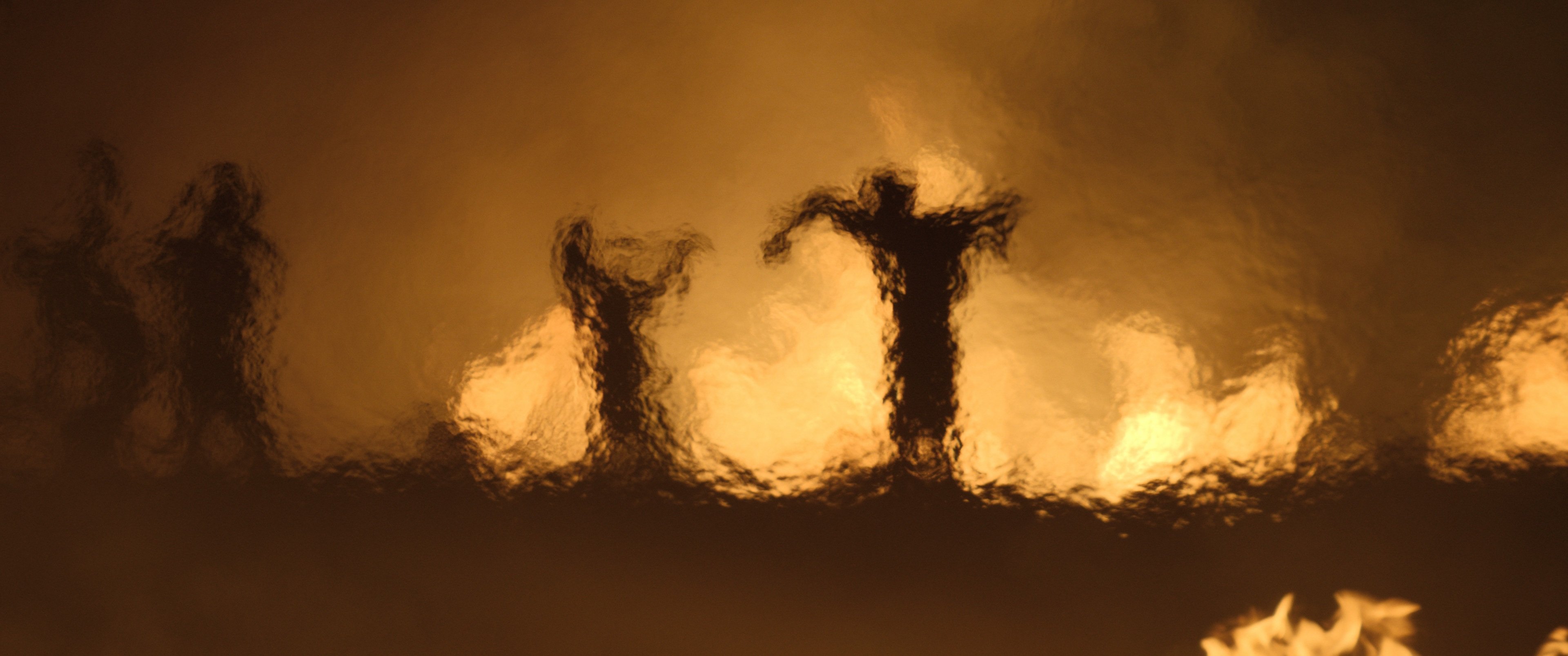
You have spoken of depicting a phenomenon that might be in the grain of the American character: gaining wealth by any means necessary.
Amassing money and power is a big part of the history of humanity, part of who we are. There are many American versions of it. I grew up with one version, which is reflected in Mean Streets, Raging Bull, GoodFellas, Casino, The Irishman. In The Wolf of Wall Street, we were dealing with the corporate version: hedge funds, Ponzi schemes, investment portfolios. Killers is yet another version. It’s a matter of acknowledging that uncomfortable reality of people who [can be] warm and caring one minute and [then commit] horrible actions — something we look away from. But no matter how painful, we need to face it.
What were the biggest challenges you as filmmakers took on, both logistically and artistically?
The biggest challenge was shooting in Oklahoma in the summer. The heat was pulverizing. Every picture should be a challenge — an exploration. If it isn’t, then why make it? [I wanted] to move the plot forward, but fill the action with lots of detours and byways and asides with so many different characters and personalities, like a wild fresco … to keep the Osage cultural elements and the Osage perspective in every scene … to get to the emotional core of Ernest and Mollie … to tell the story of this hidden historical tragedy … to give people the sense of Osage culture as alive and thriving. It was a challenge, every step of the way. And I wouldn’t trade one minute of it. It was one of the greatest experiences of my life.
You'll find our complete story on making the film here.
